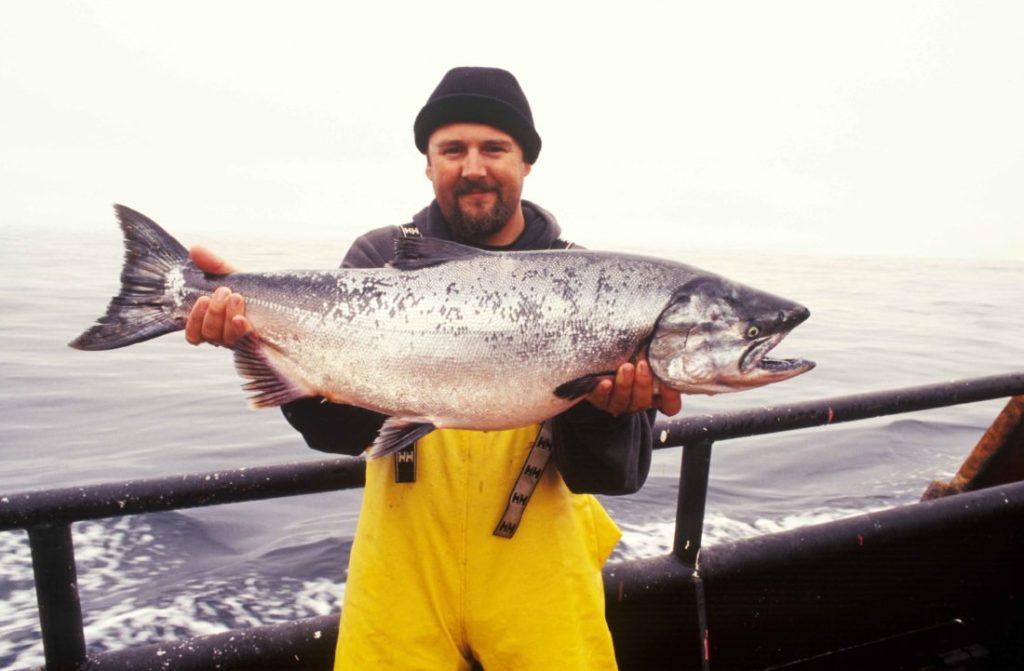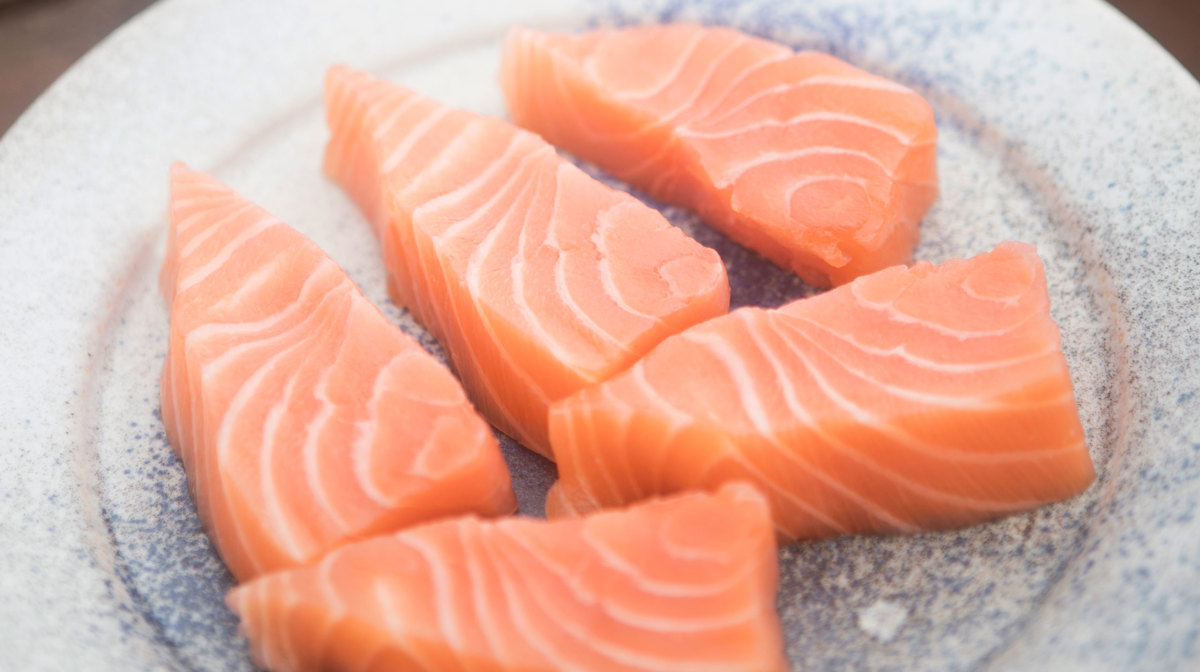High-end restaurants and fish markets all over the United States are serving Faroe Island salmon more and more this season. But where are the enigmatic Faroe Islands, and how did they become one of the best places in the world to catch salmon?
The Faroe Islands are an archipelago located in the North Atlantic Ocean, roughly halfway between Iceland and Norway. Politically, they are an autonomous country within the Kingdom of Denmark. The islands have a population of around 50,000 people and a total land area of only 541 square miles, making it one of the world’s smallest countries.
Despite their remote location and harsh climate, the Faroe Islanders have thrived by focusing their economy on fishing, whaling, raising sheep, and more recently, salmon farming The clean, cold waters surrounding the islands provide ideal conditions for raising healthy salmon
A Long History of Salmon Farming
The Faroe Islands have been farming salmon since the late 1960s, when rainbow trout were first raised there. By the 1980s, the first salmon farms were established. In the early days, there were over 60 different farms operating.
However, disease outbreaks and low prices led to increased regulation and consolidation. By the 1990s, the number of active farms dropped to around 20. Stricter veterinary regulations were introduced in the 2000s to combat disease. Today, there are just 5 major salmon producers left in the Faroes.
This consolidation combined with advances in aquaculture techniques and strict regulations has led to the exceptionally high-quality Faroe Island salmon available today. The producers are able to achieve low mortality rates, fast growth, and a consistently delicious flavor.
Where Faroe Island Salmon is Produced
There are three major producers of Faroe Island salmon today Bakkafrost HiddenFjord, and Mowi.
Bakkafrost is the largestFaroese salmon farming company, representing about 68% of the islands’ total salmon production. They operate salmon farms in several of the island’s fjords and coastal waters. Bakkafrost produces fresh, frozen, smoked, and portioned salmon products.
HiddenFjord is the producer that first made Faroe Island salmon famous on restaurant menus. Their salmon farms are located in the fjords on the islands of Streymoy and Eysturoy. HiddenFjord is unique in that they only sell whole fresh salmon, no frozen or processed products.
Mowi (formerly Marine Harvest) is one of the “Big 4” largest salmon producers worldwide. Their Faroe Island division operates 8 farming sites and contributes around 23% of the islands’ salmon production. They offer both fresh and frozen Faroese salmon.
Why Faroese Salmon is Considered the World’s Best
There are several key reasons why salmon from the Faroe Islands is widely regarded as the highest quality farmed salmon in the world:
-
Pristine waters – The Faroe Islands are situated where warm Gulf Stream currents meet cold arctic waters. There is tremendous water flow through the islands’ fjords. This results in superb water quality and sanitation.
-
Minimal use of antibiotics – Due to the excellent water quality and sanitation practices, Faroese salmon farmers rarely need to use antibiotics or other medications. The salmon are naturally healthy.
-
Traceability – Every stage of production can be traced back to the specific farm and even cage where the salmon was raised.
-
Fish feed – The salmon are fed a high-quality, low-fat diet. Even the feed itself can be traced back to its exact source ingredients.
-
Humane conditions – Faroese law sets strict regulations for maximum stocking density, water quality, and overall humane conditions for the salmon.
-
Strict oversight – As a condition of membership in the Faroe Islands’ national salmon farming association, every producer must adhere to stringent procedures that ensure the highest quality product.
Enjoying Delicious Faroe Island Salmon
The combination of pristine waters, excellent salmon husbandry practices, and strict quality oversight results in a farmed salmon that looks, tastes, and cooks like a wild salmon. The flavor is pure and clean with no “muddy” aftertaste sometimes associated with inferior farmed salmon. The deep red-orange flesh has a supple yet firm texture.
When you see Faroe Island salmon on a menu or at your local fish market, indulge in it. The premium price over regular farmed salmon reflects the incredible care and quality that goes into raising salmon in this remote North Atlantic archipelago. By supporting responsible aquaculture producers like those in the Faroes, we can enjoy delicious salmon while also preserving wild fish stocks.

A key player on the international market
Farmed salmon is an important part of the Faroese economy; it makes up half of the value of the country’s exports and gives people in the area good jobs. Around the world, people are now realizing that the best natural conditions for farming salmon can be found in places that also care about quality and sustainability. Today, Faroese salmon is exported to all six continents.
The Faroese aquaculture industry, which began in the 1960’s is well consolidated, both horizontally and vertically. There are three fish-farming companies in the Faroe Islands, Bakkafrost, Hiddenfjord and MOWI Faroes. The largest company, Bakkafrost, has been listed on the Oslo Stock Exchange since 2010. Vertical integration lets salmon farmers control the quality of the fish from the time they feed the smolts to the time they ship them out.

Salmon farm in the Faroe Islands
FAQ
Where does Faroe Island salmon come from?
Where is Faroe Island located?
Is Faroe Island salmon healthy to eat?
Is Faroe Island salmon expensive?
Where does Faroese salmon come from?
Today, Faroese salmon is exported to all six continents. The Faroese aquaculture industry, which began in the 1960’s is well consolidated, both horizontally and vertically. There are three fish-farming companies in the Faroe Islands, Bakkafrost, Hiddenfjord and MOWI Faroes.
Where do salmon live in the Faroe Islands?
Located in the heart of the wild North Atlantic Ocean, the Faroe Islands are a proud sea food nation with a centuries-old seafaring tradition. Salmon swim in these waters and are raised in pens in the pristine fjords surrounding the islands. Here is what you need to know. Salmon farming in the Faroe Islands.
How long does it take to get fresh salmon from the Faroe Islands?
Due to the small size of the islands, these transport times are extremely short, guaranteeing optimal freshness and quality. Although the Faroe Islands is located in the middle of the North Atlantic, fresh salmon from Faroe Islands can reach American and Asian markets within 24 hours after being harvested.
Why is the Faroe Islands a good place to farm salmon?
The geographical position of the Faroe Islands is ideal for farming Atlantic salmon. The remote location of the Faroe Islands is complemented by pristine clear waters, cool steady sea temperatures, strong currents and accessible fjords. The surroundings in the Faroe Islands are the natural feeding ground of wild Atlantic Salmon.
